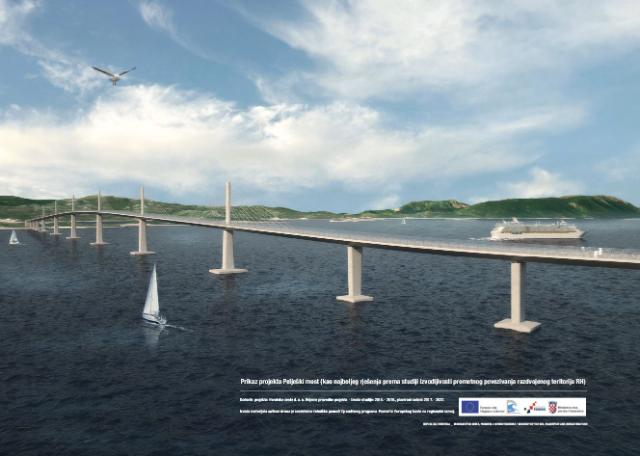Brussels, 7 June 2017
Today the Commission is allocating €357 million of Cohesion Policy funds to build a bridge that will connect the southernmost part of the country and Dubrovnik to the rest of mainland Croatia.
The construction of the Pelješac bridge, for which the EU will contribute 85% of the cost, will significantly improve the everyday life of Croatians, through reducing the travel time between Dubrovnik and Split.
This seamless connection will also greatly benefit tourism, trade and will reinforce the territorial cohesion of the South Dalmatia region with the other part of the country.
Commissioner for Regional policy Corina Creţu said: “We are a Commission that builds bridges – literally. This project genuinely embodies our commitment to removing barriers, uniting territories and bringing people together. I know how much this bridge is awaited by the Croatian people and I am glad that the EU, with its funds, can be a part of this new chapter in the History of the country. “
The Neum corridor, a strip of the Adriatic Sea coastline part of Bosnia and Herzegovina, is currently the only land-based communication route between Dubrovnik and the rest of mainland Croatia.
The new bridge will connect the Dubrovnik–Neretva County to the rest of the country, by crossing the Mali Ston Bay over the Adriatic Sea. This will facilitate a smooth flow of goods and people, especially at the peak of the tourist season.
The Pelješac bridge will be 55m high and 2.4 km long, with four lanes. The EU is also funding supporting infrastructure, such as the construction of access roads, including tunnels, bridges and viaducts, the building of an 8km-long bypass near the town of Ston and upgrading works on the existing road D414. The works are expected to be completed in 2022.
Background
A feasibility study was prepared by Croatia to analyse the possible alternatives to connect the two parts of the country. The study concluded that building a bridge would be the most favourable option as it scored highest in the multi-criteria (including safety and the impact on traffic and on the environment) and cost-benefit analysis, compared to the other options – a highway corridor, a ferry connection or the construction of tunnels.
The necessity to preserve Croatia’s natural heritage was an essential criteria taken into consideration at all phases of the project’s preparation.
Before being adopted by the Commission, the project has been carefully assessed by independent experts in the framework of the Joint Assistance to Support Projects in European Regions (JASPERS) as regards its feasibility and economic viability. The project was prepared in consultation with the authorities of Bosnia and Herzegovina.
For more information
The European Structural and Investment Funds in Croatia – 2014-2020
The Cohesion Open Data Platform


